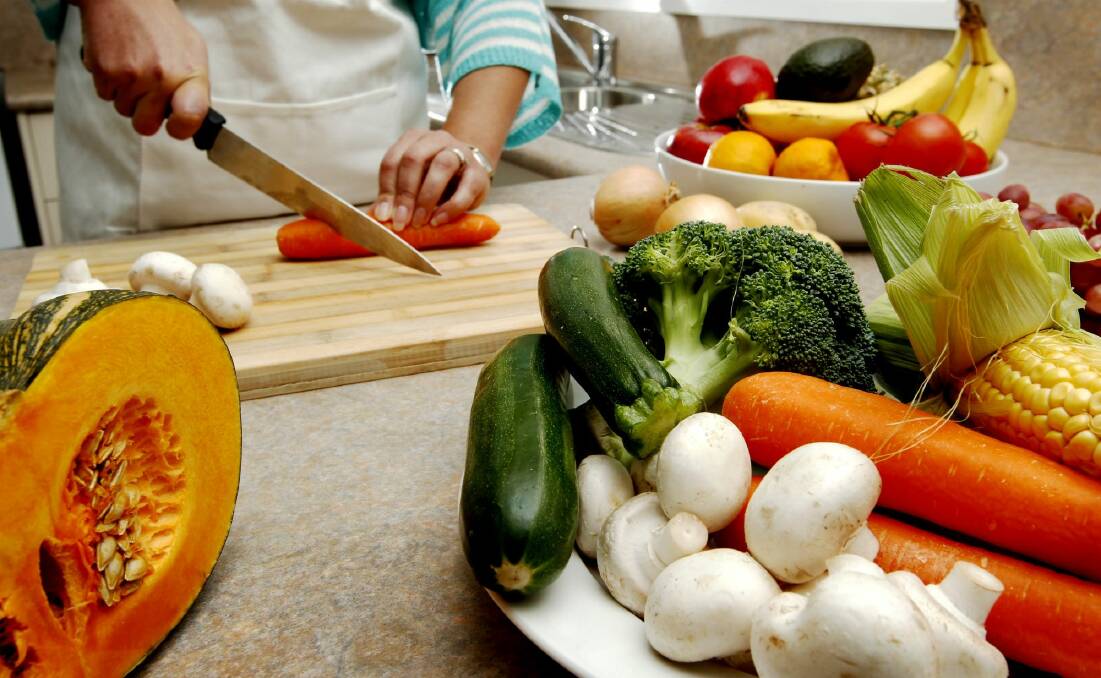Autumn vegie gardens have a special smell - over-ripe tomatoes on the soil, that faint bitter smell of lettuce going to seed, carrots sweetening as the soil cools. Every food has its season - beetroot have a richer flavour after a frost, cauliflowers are firmer and cabbage less sulphurous in winter. Out of season food is usually one of those modern firm varieties that ''travels well'' - and tastes of the Styrofoam it was packed in.
Subscribe now for unlimited access.
$0/
(min cost $0)
or signup to continue reading
We mostly eat fresh food. Once the beans have finished there are leeks, when the capsicums have finished it's time to taste the root vegetables, beetroot and parsnips or the cauliflowers you have kept for winter.

The best place to store most winter veg is in the ground, assuming you don’t live above the snow line and your ground doesn’t freeze solid all winter. Carrots, parsnips, silver beet, spinach, celery, parsley, beetroot, all the cabbage family, including broccoli, even winter lettuce, all taste better after a few frosts or a couple of cold months, not just sweeter but more flavourful.
But what about the veg that don’t last in the garden?
Beans
Beans may be frozen - they’ve long been one of the staples of the frozen food cabinet - but frozen beans lose their texture and most of the flavour. It’s better to rely on a succession of fresh peas, leeks, or spinach when the beans are finished.
Try leaving surplus beans on the bush till the pods are dry, then uproot the whole plant and bash it against a wall so the beans fall out on old newspaper laid on the ground. Gather the beans and keep them dry, away from light. You can also ''shell'' dried bean pods as you would fresh peas. Any home-grown dried bean will be delicious, though each variety varies in flavour, toughness and the ability to break down into a delicious soup-thickening sludge.
Cook your home-dried beans through winter, in stews or soups, like my favourite, a rich bean and garlic-filled minestrone.
To dry beans, thread the green beans together in small bundles, about 4-6 in each, so they hang in a row out in the sunlight for a few days. Take them in at night or if it looks like rain. They are ready to store in glass or a plastic container when the beans snap instead of bend. Soak them before using them - at least overnight - then simmer all day before eating. It will be a true taste of history - not necessarily a good one.
Corn
The old-fashioned way of drying corn was to leave it on the stem, bending the leafy top over to protect the corn cobs from rain. Sadly bush rats find this way of keeping corn a feast - you can lose an entire quarter-acre overnight.
Instead, dry the corn in a well ventilated dry place. Then use the kernels like dried beans, added early to a soup or stew, so they cook long and slowly till soft and squidgy and beginning to break up to thicken the liquid as well as adding flavour.
Pumpkins
Pumpkins are one of the great long-keeping veg - as long as you’ve grown a long-keeping variety like Jarrahdale and Queensland blue or Ironbark, which may last for six months. Don't pick pumpkins for storage till the stalk withers. ''Cure'' them on the roof or in a dry spot in the sun for two weeks after picking - it will toughen their skins, then store them on their sides so moisture doesn’t condense in the small indentations at the top or bottom of the fruit. Use immature pumpkins like baby squash or zucchini - steamed or baked with olive oil and garlic. They won’t taste of much, but the oil, garlic and other things you cook them with, will.
Sweet potatoes
Sweet potatoes can overwinter in the ground, dug as you want them, as long as you don’t get heavy frosts. A heavy frost quickly rots them. Dig them up, brush off as much dirt as you can, then when the skin is quite dry, wrap each root in crumpled newspaper and keep in a dark cupboard.
Zucchini
As zucchini get more massive, their skins get tougher. A really mature zucchini will be very large, very tough-skinned, and very inedible, with some spongy flesh around the now mature seeds. Feed them to the chooks, not the family.
This is the week to:
- Mooch around the best garden centre you can find to see what natives are blooming and look gorgeous. You might fall in love with half a dozen camellias in bloom too.
- Look for old-fashioned autumn cropping apples, firm fleshed and flavourful, like Bess Pool, Braeburn, Cornish Aromatic (my favourite), Grimes Golden, Mutsu, Splendour, Edward V11, Sweetman, Fuji, or Red Granny Smith
- Hunt out autumn/winter pears that are beginning to crop now too, like Beurre Bosc, firm and sweet, brown skin, or Winter Cole, small and with green skin.
- Plant broad beans, and long-keeping onions like pukekohe, and peas.
- Make potpourri or dry herbal teas with the last of the rose petals and perfumed leaves before they die back in winter.
- Control orchard pests by pruning off dead twigs, any mummies (decayed fruit that is still sticking on the branch and probably harboring fungal infections),and band apple trees with grease, corrugated cardboard or old wool to help control codling moth and oriental peach moth. Clean up old ladders and fruit boxes where moths may make the cocoons. Let the chooks scavenge round the orchard to pick up old fruit or insects on the ground.

